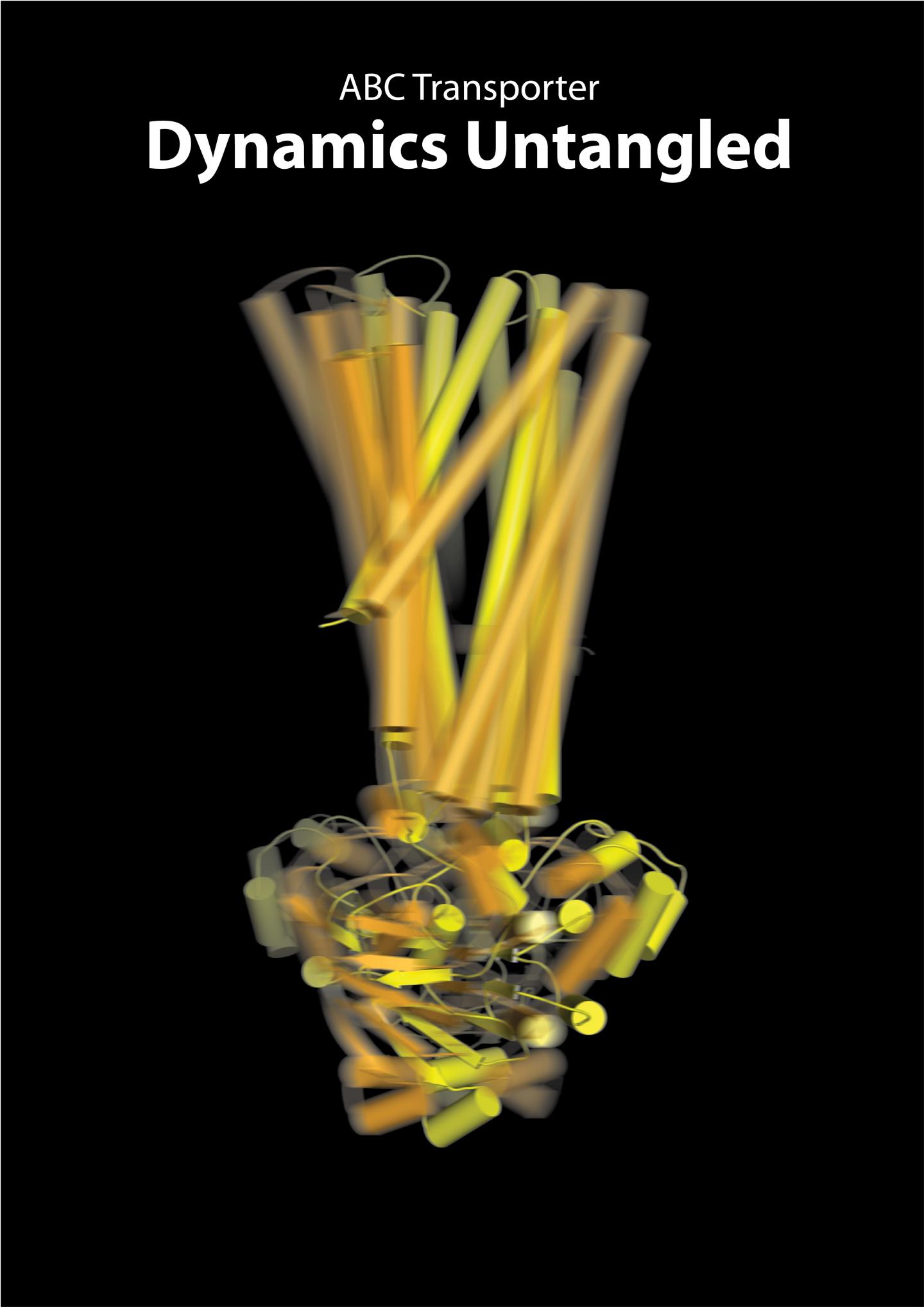Frankfurt researchers solve mechanism of ABC transporter in detail; cover story in Nature

Credit: Christoph Thomas & Robert Tampé (Institute of Biochemistry, Goethe University Frankfurt)
Almost all living organisms – from bacteria to humans – have gate-like protein complexes in their cell membranes that get rid of unwanted or life-threatening molecules. This is not always to human advantage, since in the case of bacteria or cancer cells these complexes, known as ABC transporters, are also responsible for resistance to antibiotics or chemotherapy. Researchers at Goethe University Frankfurt, together with the Max Planck Institute of Biophysics, which is also located in Frankfurt, have now succeeded in decrypting all the stages of the transport mechanism.
Over the past five years, the research group led by Robert Tampé at the Institute of Biochemistry of Goethe University Frankfurt has invested considerable effort in preparing samples of sensitive membrane protein complexes in such a way that they can be examined in membrane environment by means of cryo-electron microscopy. Cryo-electron microscopy delivers high-resolution images by freezing the molecules so that blurring is reduced to a minimum when they are in motion.
If the aim is not only to produce clear images of complex molecules, such as ABC transporters, but also to observe them at work, snapshots of different stages are required. The team of biochemists led by Tampé was able to trigger these stages deliberately by supplying the transporter with different concentrations of ATP and ADP. Without the energy supply of ATP, the transporter is unable to translocate molecules against the concentration gradient between the cell interior and its surroundings.
In the current issue of the journal Nature, Tampé and his colleagues show eight high-resolution conformations of an ABC export complex composed of two different protein subunits. The researchers were also able to make intermediate stages of the transport process visible for the first time. The publishers of Nature have selected this important discovery as the cover story for the current issue.
“Our work could lead to a paradigm shift in structural biology, since it was possible to display all the motions of a cellular machine in almost atomic resolution,” explains Professor Tampé. “Thanks to this unexpected discovery, we can now answer questions about the transport mechanism of ABC transporters which were previously the subject of controversial debate and are highly relevant for medicine.” In addition, the researchers were able to observe for the first time how the gates open inwards or outwards. The resolution of 2.8 Angstrom (1 Angstrom = a ten millionth of a millimeter) is the highest resolution ever achieved in the imaging of an ABC transporter structure with the help of cryo-electron microscopy.
###
Media Contact
Robert Tampé
[email protected]
Related Journal Article
http://dx.




